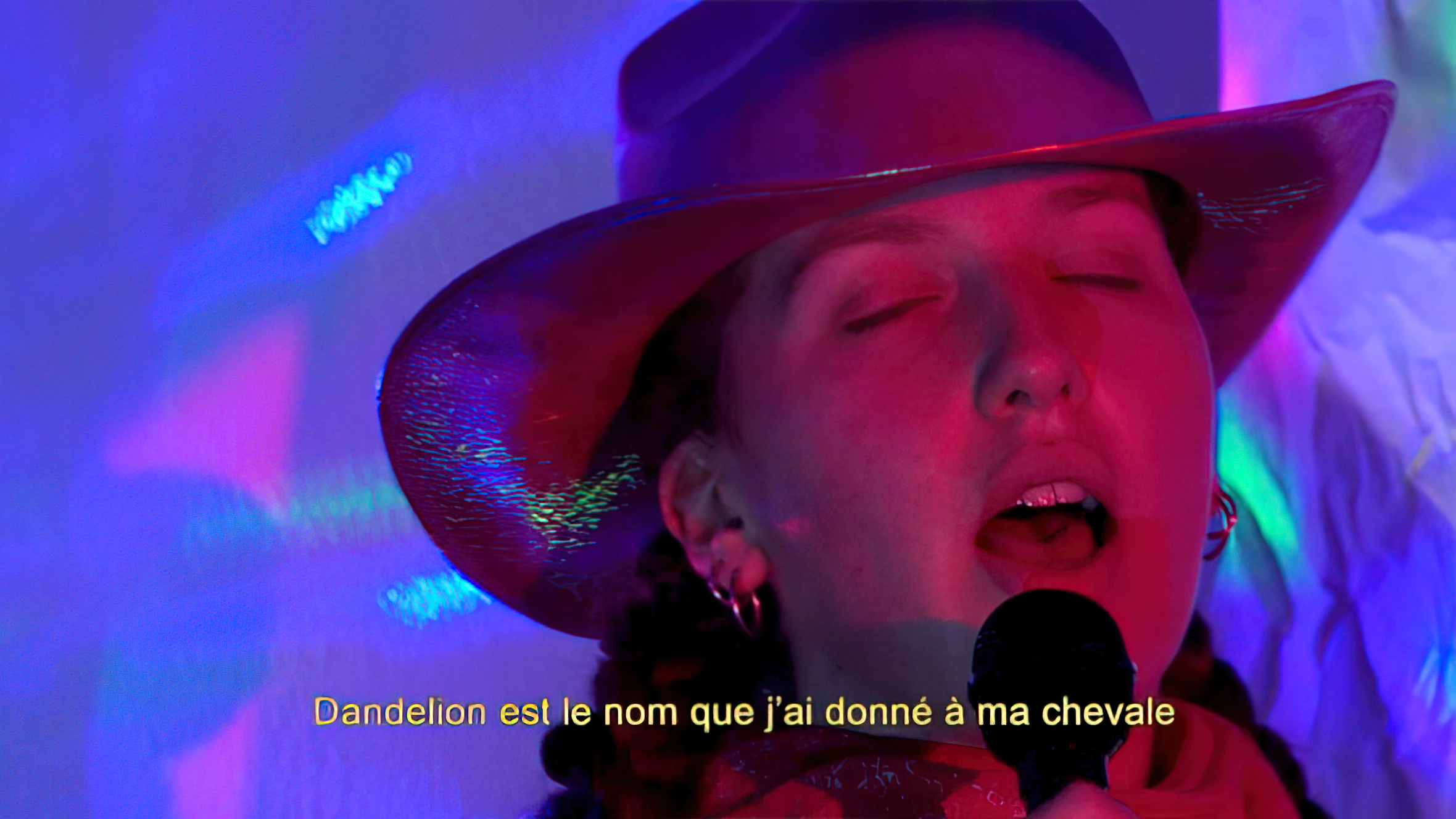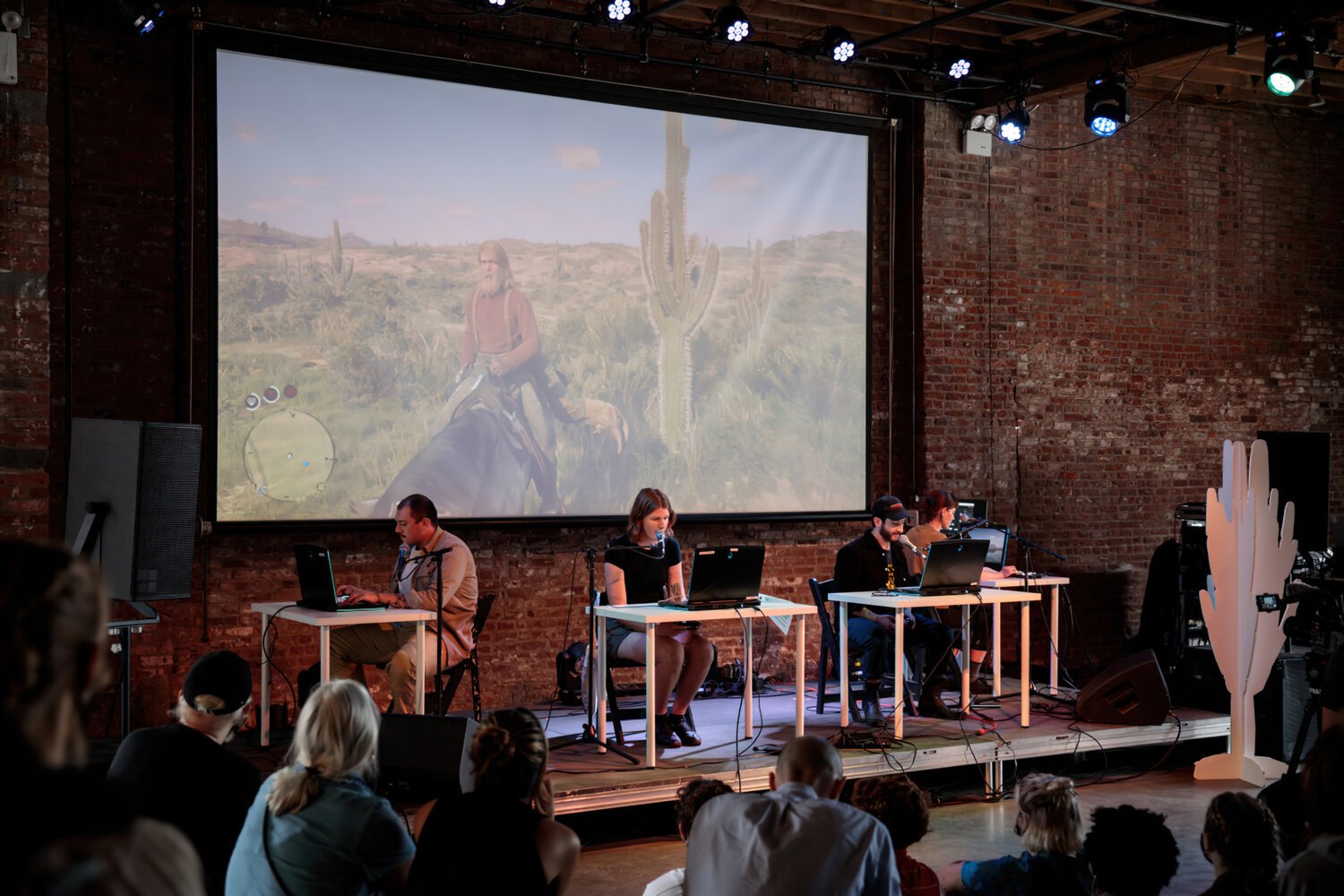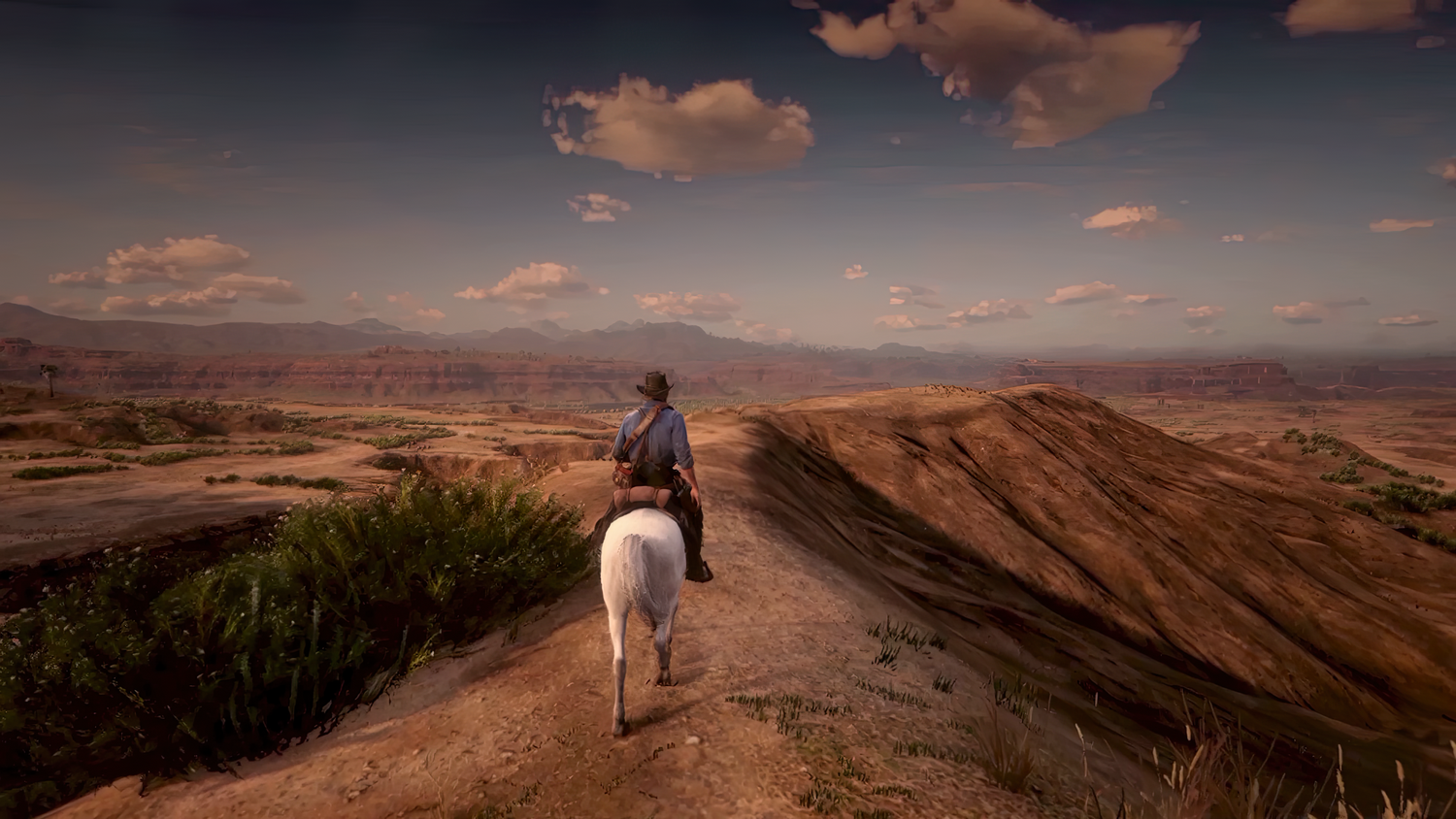Today is the last day to watch Elisa Sanchez' Au-delà du désert flou, plus aucune sauvegarde n’est possible on VRAL. To celebrate the conclusion of the exhibition, we look back at three artworks that appropriate and repurpose Red Dead Redemption.
PATREON-EXCLUSIVE CONTENT
〰️
PATREON-EXCLUSIVE CONTENT 〰️
In the past few years, several artists have used Red Dead Redemption 2/Online to create remarkable, often unclassifiable works. Although Rockstar Games’ Wild West themed videogame is the common denominator, the artists’ approach, intent, and execution vary considerably. Let’s consider three examples: Marie Foulston’s The Grannies, Kara Güt’s Welcome to my Desert Nexus (Deep inside my desert heart), and Elisa Sanchez’ Au-delà du désert flou, plus aucune sauvegarde n’est possible.
Let’s start with The Grannies. A short documentary clocking at 17 minutes, the film was originally conceived as a two channel installation at Now Play This, a video game festival in London. It presents the experiences of a group of players calling themselves The Grannies as they discover a secret area of the game where “normal” (read: consistent with the designers’ original intentions) rules do not apply. The players use their avatar as a vessel to explore such bizarre and weird territory. Here the relationship between the player and the avatar is clear and unambiguous. The filmmaker’s emphasis is on the artificiality of the simulation and the unexpected materiality of ethereal game spaces. The Grannies is first and foremost a statement about the nature of video games made by expert players, i.e. Kalonica Quigley and Marigold Bartlett, Melbourne-based friends and game developers, along with friends and fellow game-makers Ian MacLarty and Andy Brophy. Formally speaking, the video maintains the split screen/dual screen format of the original installation, unlike the works by Güt and Sanchez, which follow a less hyper-mediated approach, thus resulting in a more immediate and “transparent” viewing experience.
Kara Güt’s Welcome to my Desert Nexus introduces an extra level of performativity. Based on an existing screenplay, it features a group of player-actors performing within the game Red Dead Redemption Online before a live audience. Gemma Fantacci describes Welcome to my Desert Nexus as a“three-act play combining different aspects of performance and online gaming, IRL acting, and avatar dramatization”. A commentary on the myth of the frontier - “a facade upon which the player could paint their fantasies, just as the frontier of digital space is a facade for the same. In thinking about the facade and the false promise of infinity” (Kara Güt) - Welcome to my Desert Nexus is primarily a live performance, one in which things could go wrong - both on a technical and practical level. The actors' performance is recorded and subsequently shown as a machinima. Kara Güt’s Welcome to my Desert Nexus is a groundbreaking hybrid of gaming and theater, literally and metaphorically redefining the notion of “play”, in physical and online spaces. The theatrical performance is imbued with liveness, that special kind of hic et nunc that Walter Benjamin calls the “aura” of the artwork and that Philip Auslander explored in his seminal text Liveness: Performance in a Mediatized Culture (1999). Although the play does feature meta referential elements (it was, after all, inspired by Sartre’s No Exit) , it is mostly consistent with the Wild West tropes and conventions of the original source, Red Dead Redemption. The actors maintain their in-character persona throughout the entire play….
Matteo Bittanti
This is a Patreon exclusive article. To read the full text consider joining our Patreon community.





